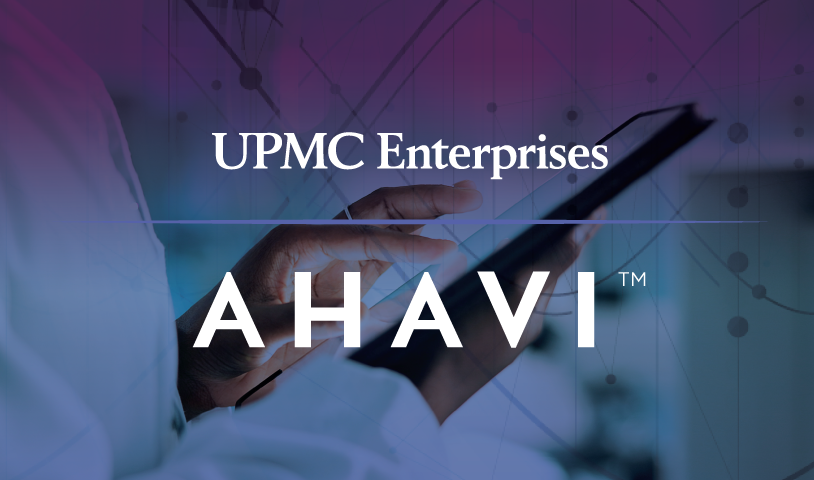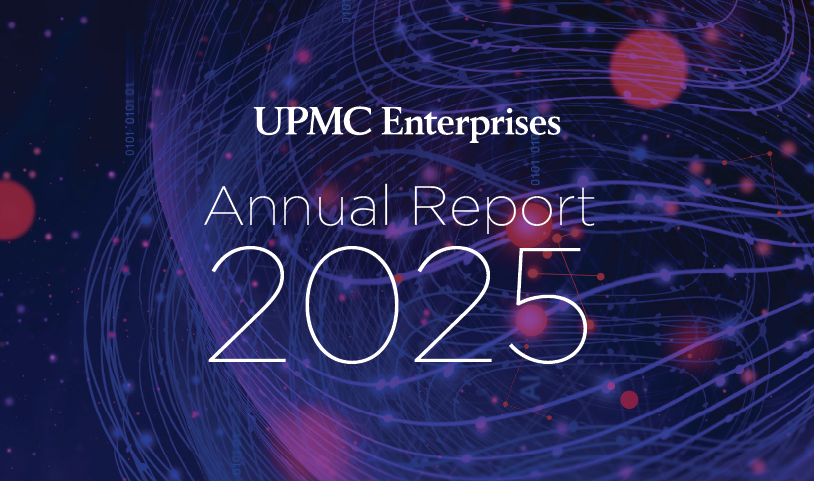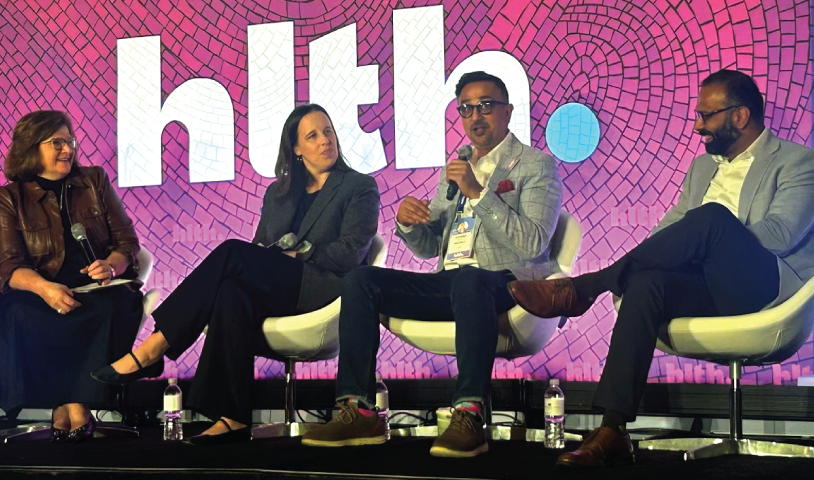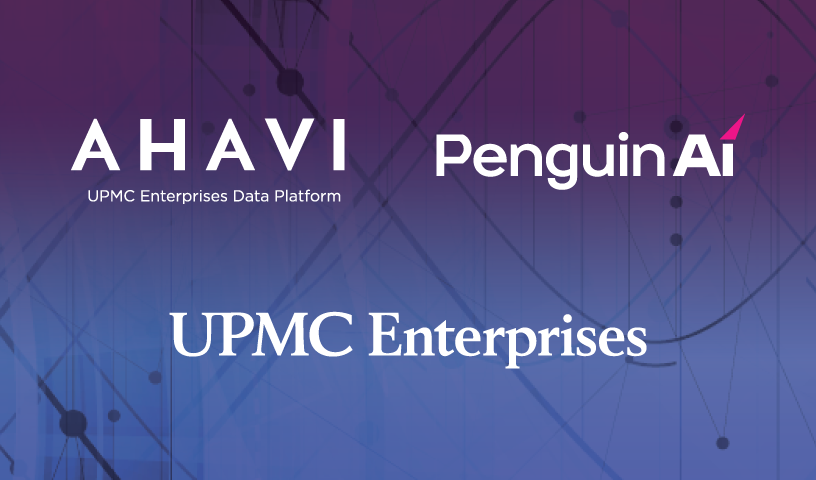
Aug 26, 2025
How Access to Real-World Data Can Drive Deeper Insights for Clinical Trial Sponsors
Ahavi™, the real-world data platform from UPMC Enterprises, provides secure access to de-identified clinical data from UPMC’s vast patient population to accelerate discoveries and improve patient care.
While many health care innovators will benefit from the insights generated by Ahavi, including researchers and AI developers, pharmaceutical and biotech companies are key users of the platform. With Ahavi, a variety of leaders can expect to design more efficient clinical trials and quickly drive breakthroughs that are grounded in real-world evidence.
To learn more about how pharmaceutical and biotech companies can benefit from Ahavi, we talked to Nicole Ansani, PharmD, senior vice president of New Development Initiatives at UPMC Enterprises. Dr. Ansani, a clinical pharmacist who spent two decades in the pharmaceutical industry, joined UPMC Enterprises in 2024 and is helping to connect leaders in R&D, clinical operations, health economics and outcomes research, and others to the insights derived from UPMC’s massive stores of longitudinal patient data.
The platform provides valuable insights that can inform clinical trial design and feasibility, provide opportunities to better understand the patient journey, and allow trial sponsors, researchers, and other roles in pharma to make better informed, data-driven decisions.
Why is real-world data important to the pharmaceutical industry?
Real-world data benefits the pharmaceutical industry in several ways, Dr. Ansani said. One important way is that it helps them better design clinical trials by providing greater insight into the questions that need to be solved for in the trial.
Real-world data also helps pharmaceutical companies understand how that product is performing under real-world conditions post-approval.
And harnessing real-world data provides opportunities to apply predictive modeling and AI to find answers to many valuable questions such as:
- How do you set up your trials to be the most efficient and effective?
- What patient populations are most likely to respond to the treatment you’re studying?
- What are the off-label uses and can those be used to expand the medicine’s label indication?
Real-world data can provide significant benefits from the very beginning of the drug development process all the way through the loss of exclusivity, to figure out what’s the next indication, Dr. Ansani said. The examination of off-label use has led to new indications for existing medications. One well-known example involves a breast cancer drug from Pfizer, which in 2019 received U.S. Food and Drug Administration (FDA) approval to expand the label indication of Ibrance to include the treatment of men with breast cancer.
That approval was based on retrospective data, which was important because it’s not common for men to have breast cancer. Carrying out a traditional clinical study would have been challenging from a recruitment standpoint.
“Going the traditional clinical trial route in this case may have delayed that label indication for many years. But looking at retrospective data, you could do it very quickly,” Dr. Ansani said. “When we think about doing clinical trials differently, especially increasing the use of pragmatic trials, that is something where UPMC’s sponsored clinical trials program, married with Ahavi, can deliver unlimited potential for pragmatic design. That’s something we’re going to see much more of in the near future.”
What makes Ahavi unique among health care data platforms?
There are other data platforms and many provide access to structured and unstructured data. But very often it can be a challenge to connect the structured data with the unstructured data within one system with an enterprise master patient index (EMPI) that gives us a strong marriage between the two sets of data.
Ahavi, on the other hand, provides access to structured data and unstructured notes for millions of patients at UPMC and has a minimum linkage rate of 80% or higher. Many commercially available databases have linkage rates of around 20% to 25%, Dr. Ansani said.
Ahavi also allows researchers to see the sequence of events over time when it comes to a patient’s journey with medicines. That time sequence is also differentiator with Ahavi. The way other real-world databases are structured allow users to look at a period of time and you can see which patients are on that drug during that time but they don’t allow researchers to discern the sequence of events, Dr. Ansani said.
“It’s challenging to answer the question, ‘why did they stop one drug and start another,’ and find out the reasons behind the switch,” Dr. Ansani said. “That patient journey and being able to have the clinical context of what’s going on in that patient journey from the unstructured data, that’s the biggest differentiator with Ahavi.”
We know clinical trials are costly for sponsors and can take a long time. What are some of the ways that Ahavi can improve clinical trial design and execution?
At the most basic level, Ahavi allows researchers to easily learn how certain inclusion and exclusion criteria for a trial will impact the number of patients who meet those criteria. If a sponsor wants to know if their study will be successful at UPMC, as far as being able to enroll patients, Ahavi provides a very good estimate of that. “From our perspective, that’s one of the biggest benefits is in the trial design and trial setup,” Dr. Ansani said.
Knowing the number of patients who meet study criteria is only a starting point. Pharmaceutical companies can partner with Ahavi early and conduct predictive modeling to see how different inclusion or exclusion criteria might impact study enrollment and trial results. “If there is some ability to make those inclusion-exclusion criteria less onerous, but not compromise the data and the impact of the data collection on the results, that can make the study much more efficient and effective,” Dr. Ansani said.
Access to real-world data has already been shown to reduce study costs. For example, ADAPTABLE, a pragmatic cardiovascular trial was estimated to have cost one-fourth to one-fifth the amount of a traditional trial thanks to capture of EHR and claims data and need for fewer sites, according to the American College of Cardiology. Further, use of real-world data from the Society for Vascular Surgery Vascular Quality Initiative (VQI) registry to support FDA regulatory decisions was found to be 59% less costly than comparable traditional clinical trials, according to a study published in BMJ Surgery, Interventions & Health Technologies. Significant enrollment time savings also were realized, the BMJ study noted.
Are there limitations to the platform that pharma partners should know?
The biggest limitation is, for better or for worse, that the data in Ahavi comes from one health system and the majority of its patients are from one state, Dr. Ansani said. The generalizability of the insights in Ahavi to the U.S. population is limited to UPMC’s prescribers, formulary, and patients.
Final thoughts?
In clinical trial design, what sponsors are looking for is an understanding of the treatment patterns, gaps in care, and the impact of the patient population on the design of a study. gaining insights from real-world data early in the process creates an understanding of the clinical context for a study. Then, by modeling and using predictive analytics, researchers have a solid estimate of how to set up their study, Dr. Ansani said. Once a drug is approved, the ability to do comparative-effectiveness research using real-world data is a major advantage.
“There’s a lot of potential to be more effective and more efficient and less costly,” she said. “I’ve said to the Ahavi team many times, ‘Where were you when I was in pharma?’ It would have made my life so much easier.”
Next Steps
- Learn more about Ahavi and reach out to the team.
- Subscribe to the Ahavi Newsletter for regular email updates about the platform.
- Read more about how UPMC Enterprises is revolutionizing research and development with Ahavi.


